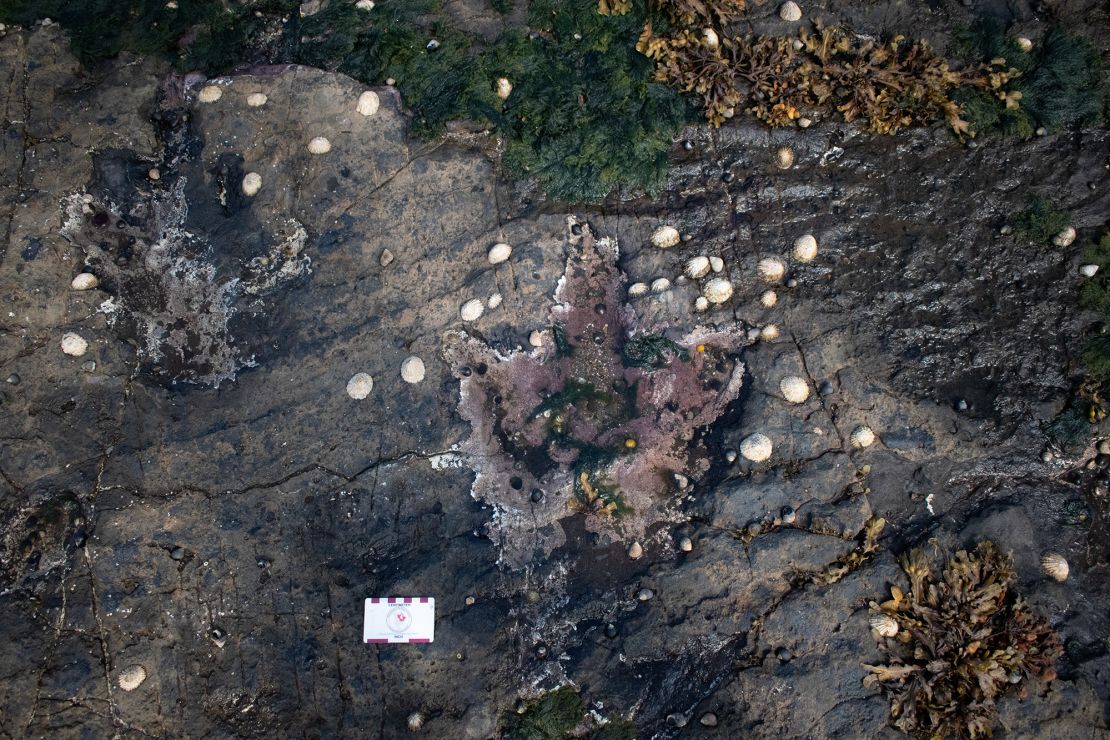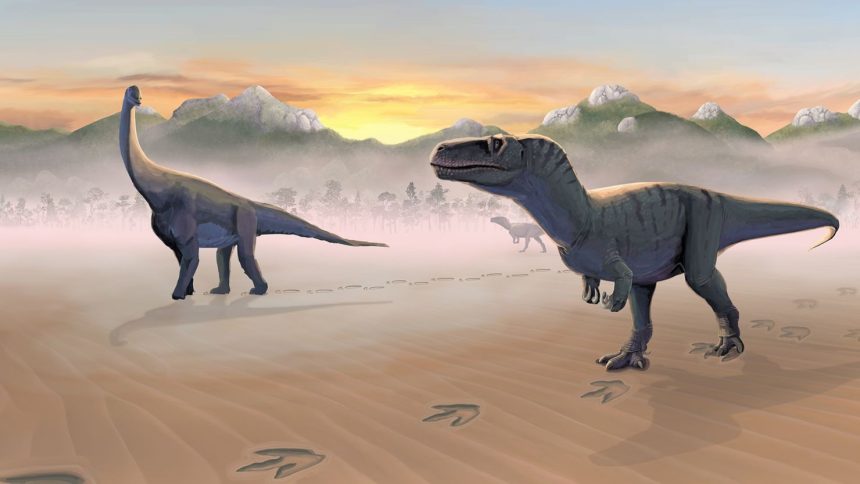Sign up for CNN’s Wonder Theory science newsletter. Explore the universe with news on fascinating discoveries, scientific advancements and more.
CNN
—
Tyrannosaurus rex ancestors and their plant-eating dinosaur prey would have congregated to drink water from a lagoon in what is now Scotland, new research suggests.
Despite the fact that the carnivorous megalosaurs would have hunted the long-necked sauropods 167 million years ago, newly identified footprints show that both types of dinosaur would have milled around the edge of the lagoon, much like how modern-day animals congregate at watering holes, researchers from the University of Edinburgh say.
Lead study author Tone Blakesley, a Masters graduate at the Scottish university, told CNN that he was among a small group that recognized an initial three footprints at the remote site on the Isle of Skye’s Trotternish Peninsula in 2019.

“It was very exciting,” said Blakesley, who went on to document a total 131 footprints for the study, using a drone to take thousands of overlapping images of the site before producing digital 3D models of the footprints using specialist software.
Because of their flatness, the footprints had previously been mistaken for fish resting burrows. Blakesley explained that this was due to the fact that there would have only been a thin layer of sand on top of a much harder layer of mud, leaving only a shallow indentation.
They are preserved in “exquisite detail,” he added.
The footprints were made 167 million years ago, during the Middle Jurassic period, an important time in dinosaur evolution, but little rock remains from the era, Blakesley said.
As a result, the site in northern Scotland provides invaluable insights into the life of dinosaurs at the time.
In stark contrast to the generally cold and blustery weather on Skye today, the area would have had a warm and humid subtropical climate during the Middle Jurassic, with a series of lagoons on a huge river estuary, Blakesley said.
The sauropods were “big lumbering giants which would have plodded along,” said Blakesley, who used the spacing of the footprints to estimate that they would have moved at speeds of around 2.5 kilometers per hour (1.55 miles per hour), around half the average human walking speed.
They would have used their long necks to feed from the top of conifers and other trees, he added.
The “jeep-sized” megalosaurs, which are a kind of theropod, would have moved around the lagoon on their way from one area of vegetation to another — in search of prey or to seek shelter and rest — traveling much faster, at around 8 kilometers per hour (5 miles per hour), he said.
“It would have been quite a surreal place to stand in,” Blakesley said.
But while the dinosaurs would have been in the area at around the same time, the footprints do not demonstrate any evidence that they interacted by the lagoon, and it is unlikely that they would have been side by side.
“That would be a disaster for the sauropods if that happened,” he said. “The temptation for lunch… would have been too much for the theropods.”
Blakesley continues to work at the site and discovered more dinosaur footprints on Tuesday, he told CNN.
“There’s more footprints to find,” he said, adding that he is also investigating other dinosaur track sites on Skye as well as in the south of England.
The study was published Wednesday in the journal PLOS One.



